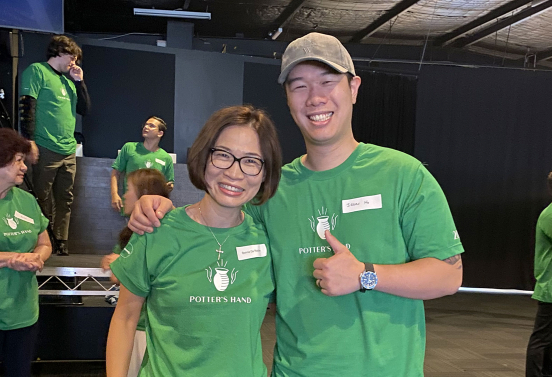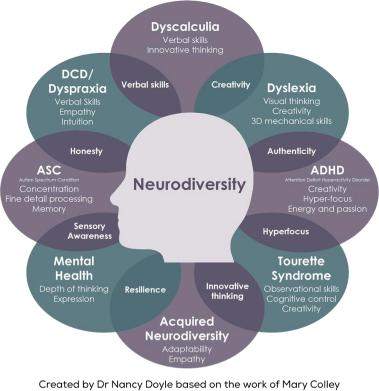Bank information:
Account Name: Learning Bridge Association Limited
Bank A/C no: 015-514-68-11420-7
Bank Name: The Bank of East Asia, Limited
Bank Code: 015
Swift Code: BEASHKHH
Bank Address: 10 Des Voeux Road Central, Central, Hong Kong
| 1 | Autism Spectrum Disorder (ASD) |
| 2 | Attention Deficit and Hyperactivity Disorder (ADHD) |
| 3 | Specific Learning Difficulties (SLD) |
| 4 | Intellectual Disability (ID) |
| 5 | Mental Illness |
| 6 | Visual Impairment (VI) |
| 7 | Hearing Impairment (HI) |
| 8 | Speech Impairment (SI) |
| 9 | Physical Disability |
| 10 | Organ Disability / Chronic Illness or Long-term Illness |
| 1 | Autism Spectrum Disorder (ASD) |
| 2 | Attention Deficit Hyperactivity Disorder (ADHD) |
| 3 | Dyslexia |
| 4 | Developmental Coordination Disorder |
| 5 | Dysgraphia |
| 6 | Dyscalculia |
| 7 | Tourette Syndrome |

Neurodiversity refers to individuals with learning difficulties such as dyslexia, dysgraphia, or attention deficits, making academic learning more challenging compared to their peers. However, neurodiverse children or adolescents do not necessarily have intellectual disabilities, just as individuals with physical disabilities do not necessarily have neurodiversity. The two should not be conflated.
At Learning Bridge Association (LBA), we primarily focus on supporting individuals in categories 1 to 5 listed above. Our goal is to raise awareness across industries and communities about the characteristics of neurodiverse youth, recognizing their strengths while also understanding their challenges.
Cognitive and Learning Difficulties - Specific Learning Difficulties (SPLD) - Dyslexia
Communication and Interaction Needs - Autism Spectrum Disorder (ASD)
Social, Emotional or Mental Health Needs - Attention Deficit Hyperactivity Disorder (ADHD)
In recent years, parents and the education system have gained a deeper understanding of neurodiversity and have started providing more comprehensive support. However, it is crucial to acknowledge that neurodiverse individuals continue to need societal support even after they leave the education system. We are committed to assisting neurodiverse youth facing the above challenges.

Neurodiversity broadly refers to variations in emotional regulation, learning/cognitive ability, attention, and development. Human brain structures differ, leading to unique personality traits. Research estimates that 15%–20% of the population has some form of neurodiversity, such as autism spectrum disorder, ADHD, attention deficit disorder (ADD), dyslexia, dyscalculia, developmental speech disorder, physical dysfunction or social anxiety, etc.
Under this broad category, neurodiverse individuals often experience challenges in social communication and struggle to integrate into society.
In Hong Kong, students with visual, hearing, speech, or physical impairments are placed in specialized schools with tailored facilities.
However, students with neurodiversity are generally not provided with specific arrangements. Regardless of their neurodivergent category, a significant proportion of these students attend mainstream schools, where learning difficulties often result in weaker academic performance.
In fact, they all possess unique qualities and talents that have yet to be discovered. This is one of the key reasons or the establishment of Learning Bridge Association—to showcase their distinctive strengths that deserve recognition and appreciation. By unlocking their potential, we aim to build a more inclusive society for the future.
The term "neurodiversity" is intentionally used to move away from the negative perception that neurodiversity equates to disability. Instead, we aim to convey a positive message: neurodivergent individuals understand and embrace differences. For example, when someone's way of handling tasks differs from the norm, they may not see it as a mistake or incorrect but rather as an alternative approach.
Moreover, as they grow, their thoughts and behaviors continuously develop, just like how race, gender, sexual orientation, and individual abilities each have their own unique characteristics.
The chart above already highlights that individuals withdifferent neurodiverse traits often possess distinct strengths and potential. A person with Autism Spectrum Disorder (ASD) may be highly focused and detail-oriented, making them well-suited for programming or technical tasks. A young person with dyslexia might be highly artistic and creative, excelling in design-related fields.
Unlike individuals with physical, visual, auditory, or speech impairments, who can often be easily identified, neurodivergent individuals are not immediately recognizable. Their unique behaviors and communication styles are often misunderstood as being unsociable, overly self-centered, or unreasonable. As a result, they face significant challenges when seeking employment and may struggle to find suitable jobs or integrate into society.
Additionally, because their brain functions differently from the typical neurological system, they are often labeled as "unsuitable" for a "normal" work environment. Misconceptions, a lack of awareness about their traits, and the absence of basic accommodations, such as office facilities and appropriate team structures, all contribute to limiting their job opportunities. These barriers prevent them from showcasing their potential and talents and from fully participating in society.
Given these challenges, Learning Bridge believes that the key is to increase public awareness and understanding of neurodiversity. By recognizing and affirming the potential of neurodivergent individuals and providing them with support and opportunities, we can foster a sustainable and inclusive society. Learning Bridge is committed to being a pioneer and advocate in this mission.
Each neurodivergent individual possesses unique skills and strengths, making it difficult to classify them strictly within existing categories. Therefore, before job matching, we conduct interviews or resume assessments to gain a deeper understanding of each person. Unlike traditional recruitment agencies, Learning Bridge is not driven by profit or commissions. Our mission is to match individuals with the most suitable job opportunities based on their strengths.


Neurodiversity includes individuals with learning difficulties such as dyslexia, ADHD, or challenges in traditional classroom learning. However, these individuals do not necessarily have intellectual disabilities. Similarly, people with physical disabilities are not necessarily neurodivergent. The two should not be confused, as neurodivergent individuals often possess untapped potential that can bring valuable contributions to the workplace.